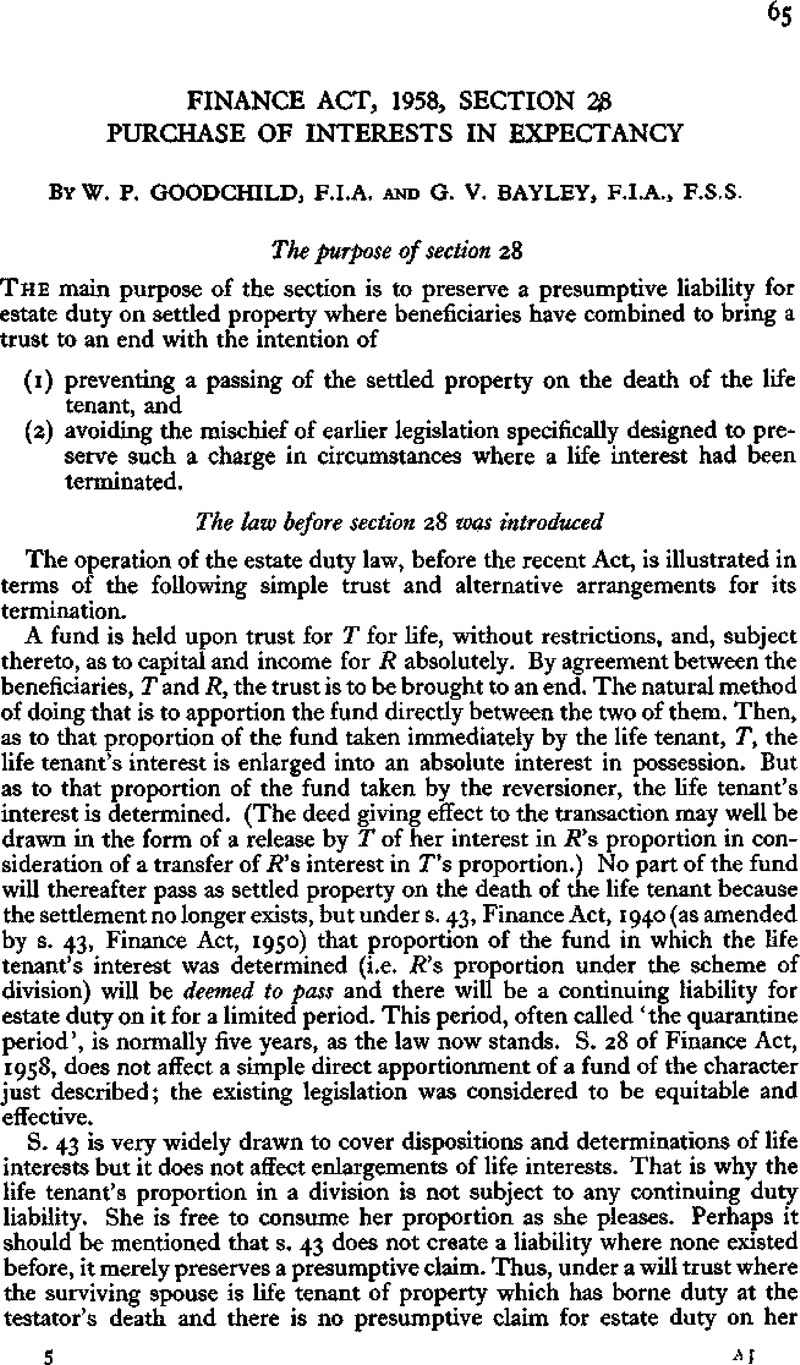No CrossRef data available.
Article contents
Finance Act, 1958, Section 28: Purchase of Interests in Expectancy
Published online by Cambridge University Press: 18 August 2016
Abstract

- Type
- Other
- Information
- Copyright
- Copyright © Institute and Faculty of Actuaries 1959
References
page 67 note * In the limiting cases (1) where T takes the whole fund (release of reversion without consideration) and (2) where R takes the whole fund (release of life interest without consideration) the taxable elements are respectively (1) the investment market value of the reversion, and (2) the investment market value of the life interest. The impartial (apportionment) results for T and R recommended by the actuary give rise to no quantum benefit. The amount of the quantum benefit for other fancied divisions (falling somewhere between the ‘impartial’ result and one of the extremes) may be measured by the extent of the release without consideration.
page 67 note † Where there are n reversioners each entitled to the absolute reversion to I/nth share of a fund, the life tenant can treat separately with each, and for stamp duty purposes each purchase can be a separate transaction. Stamp duty may turn out to be a trivial matter, and therefore not a serious objection to a transaction in purchase form.
page 67 note ‡ See, for example, the article ‘Terminating a Settlement’, by G. V. Bayley in the Solicitors' Journal dated 9 August 1958, p. 571, which is noted on p. 102 of this Journal.
page 68 note * Occasionally, an attempt is made to incorporate in the arrangements for a direct apportionment a transfer of the burden of the continuing duty liability from R to T in order to obtain the effects of a purchase for control without the ad valorem stamp duty burden. This involves, in effect, a separate transaction whereby T, in consideration of a payment by R, indemnifies R against the s. 43 liability. The trustees could not safely release the whole of R's proportion of the fund without specific security from T. The document should be drafted by an experienced Counsel.
page 68 note † The presumptive rate has sometimes to be adjusted by calculating a weighted average if the total estate is at or close to the limit of a duty rate bracket, e.g. the ‘weighted’ rate would not be the same for an estate of £110,000 as for one of £150,000, those being the limits of the 50 % bracket.


